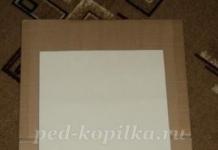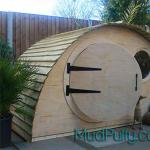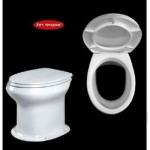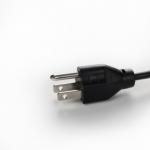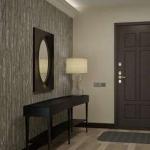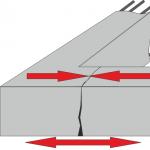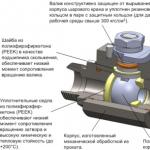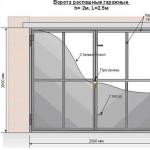Most often, electrical appliances are supplied with a ready-made system for connecting them to the network. However, there are situations when it is necessary to replace an element such as an electric plug. Choosing the right option is very important, as well as connecting it correctly. In order to avoid unpleasant situations in the future, you should study the technology for repairing equipment.
Types of electric plugs
There are only three types of electrical plugs. These are collapsible and non-collapsible (cast) types of equipment.
Each of them performs the same function. An electric plug of any type serves as a network connection with a current conductor.
Cast plugs have gained great popularity in the world of modern household appliances. They are reliable, aesthetic and also comfortable. The wire is attached to the pins by spot welding. The system in this case resembles a single wire. There is no contact in this case. This method of fastening ensures that there is no oxidation and loosening at the junctions of the wire with the pins of the plug.
The reason for the breakage of a cast plug is a fracture of the conductor at the base. Usually such devices are not repaired.
A collapsible plug will help bring the device back to life. The electrical cord is connected to the plug very tightly. The better the contact, the better the equipment works.
Global plug markings
Depending on the state that produces the presented equipment, there are 13 varieties of gifts and plugs for them. They are marked in Latin letters.

Types A and B of electrical plugs are assigned to American plugs. Type A does not have a ground, and B already contains a place for its connection. Their pins are flat.
Type C belongs to European plugs with round pins without earth. Marking D have English sockets. The pins are round, two thin and one thick.
French electrical plugs with a place for grounding have two round pins. The third is in the socket.
The type F grounding plug is similar to C. Only it has two grounding plates.
British plugs include types M and G. Other European varieties include sockets J, K, L. Australian plugs for electrical cords are marked with the letter I, and Israeli - H.
Adapters are used to connect the plug to incompatible sockets.
Electric plugs in our country
In our country, there are 4 types of trailed and cast forks.

Type C is a non-separable fork. They most often come with household appliances and are connected to a cord.
Type C5 has round pins with a diameter of 4 mm, without earth contacts. The power of equipment connected to such a plug does not exceed 1.3 kW (6 A).
Type C6 belongs to such equipment as an electric plug, which may not have a grounding trailer. In some variants, they have a ground pin. Pin diameter - 4.8 mm. The plug is designed for power up to 2 kW (10 A).
Type C1-b includes collapsible varieties, designed for a power of 1.3 kW (6 A).
Which fork is best?
Among professional electricians, there is an opinion that a cast plug is still more reliable. This applies to quality products from well-known manufacturers.
The connection of the wire with the pins occurs in production by soldering or, in very rare cases, by crimping. The subsequent hermetic casting of the body reliably protects the junction, and also prevents oxidative processes in this segment.
The only weak point of such a product is the connection of the conductor to the plug. If a break occurs, it is better not to try to disassemble the cast version of the product. Having decided to repair the device, you should connect a collapsible plug to the wire.
Rules for connecting plug C1-b
Different types of electrical plugs will require certain installation guidelines for each.

For detachable plugs C1-b, good contact of the wire with the pins should be ensured. The ends of the conductors should be tinned.
The insulation from the cable is removed by 20-25 mm without touching the cores. Rings should be formed around the crimp screws of the plug. The remaining overlap is wound around the cleaned base.
The finished ring is removed and carefully tinned so as not to press the insulation. Then they are again put on the screws and clamped to the stop. Care must be taken not to break the thread.
Pins with wires are inserted into the landing recesses. The outgoing wire is pressed with an insulating bar without damaging the outer sheath of the cable. Next, the halves of the plug are tightened with a bolt and nut.
Connecting the wire to the plug C5 and C6
Here the process of connecting the wire is even easier. The electric plug type C5 and C6 already incorporates special pads. You don't need to make rings. Wire with a cross section of 2.5 mm square. envy up to 10 mm, and from 1.5 mm square. - up to 20 mm. It has to do with connection technology.

Thin wires will need to be folded in half before fasteners. The core is twisted and inserted into the terminal.
It is better to tighten the pads from time to time in order to ensure good contact quality. In such devices, it is quite good.
If the mains does not provide grounding, you should not connect an extra contact anywhere. The third conductor is left unstripped as a reserve. It can come in handy when one of the veins breaks.
If you install a plug with a high power limit on an electrical appliance, this will increase its margin of safety. However, putting a plug on the equipment with a smaller load capacity, one should expect it to overheat, fail and create an emergency. Be sure to pay attention to the marking of the plug and the power of the household appliance.
Having familiarized yourself with the varieties of such an electrical circuit element as an electric plug, you can choose the right option for replacing the old plug. There are several types of such devices. Each is selected in accordance with the required load of the household appliance to which the wire with the plug is connected. By making the connection in accordance with all the rules, there is no doubt about the durability and safety of the operation of the electric plug.
One of the components of the power supply system is an electrical outlet. These devices are in every house, apartment, in every production. They are even on the street. However, the modern range of sockets is so wide that it is better to know the basic nuances before choosing.
A conventional electrical outlet consists of a plastic front panel and a dielectric base (heat-resistant plastic or ceramic) with contacts and connectors for connecting plug plugs. The plastic base is cheaper and more durable, the ceramic is more expensive and more brittle. The number of pins and their shape depends on the type of electrical outlet (single-phase or three-phase, grounded or not) and the country in which it is used.
Contact materials
Electrical contacts can be made from several different materials:
- brass (for rooms with a normal level of humidity);
- tinned brass (for high humidity);
- bronze (for any operating conditions).
The most capricious are brass contacts without sputtering. The color of the metal is light yellow with a pronounced luster. In conditions of high humidity, they quickly oxidize, which leads to poor contact. Also, brass does not spring well, which is why the contact is weakened over time. To eliminate this drawback, the electrical socket with brass contacts has additional springy petals that press the contact plates.

The base can be ceramic or plastic, the contacts are brass and brass with sputtering, bronze
Tinned brass has a white matt finish. Due to the protective coating, it oxidizes less, springs better and keeps its shape. Such contacts are usually placed in electrical outlets designed for wet rooms and for the street.
Electrical outlets with bronze contacts are rare and can be distinguished at a high price. The bronze contacts are also yellow, but matte and darker. Bronze contacts spring well, provide high-quality contact for a long time.
Ground contact
In addition to phase contacts, the socket may have a ground contact. It is required when connecting:
- powerful technology;
- equipment demanding the quality of power supply (with electronic control);
- equipment in the working cycle of which water is used (for example, and).
In addition, electrical sockets with grounding must be installed in rooms with high humidity, on the street - this is an electrical safety requirement. The presence of a worker is the safety of you and your family.

Sockets without grounding are permissible only in dry rooms, and simple devices such as table lamps, low-power oil heaters, convectors, etc. can be included in them. They are attractive at a slightly lower price, and less “depth”, so that when installing, you need to make smaller holes for them. But, no matter how attractive they may be, a computer and sophisticated equipment that consumes little electricity, but is demanding on the quality of the power supply, must be plugged into sockets with grounding. In addition to protecting against electric shock, grounding also removes static, which can be fatal to electronics.
Wire connection
Wires are connected to the contact plates using screws or screwless clamps (pressure contacts allow quick connection without using a screwdriver).
Screw connections sockets can be divided into two types:
- With the possibility of fastening the end of the wire in the form of a loop. Provides a perfect screw connection, so large is the contact area of the conductor with the pad.
- With the possibility of fastening only the straight end.
When installing sockets of the first type, it will take more time, since you need to make a loop (it is convenient to use round-nose pliers), completely unscrew the screws to put it on, and then twist the knot. With sockets of the second type, everything is simple - they inserted the stripped wire into contact, and then tightened the screw with a screwdriver.

During the operation of sockets, the contacts undergo a heating / cooling process, which leads to a gradual loosening of the screw contact. For this reason, screws must be tightened once every six months.
Electrical sockets with clamping fixation of conductors allow you to connect as quickly as possible. The stripped end of the wire is inserted into the socket until it stops. The socket has a flat-spring clamp (spring-loaded contact) that securely clamps the conductor. Due to the elastic force of the spring, the contact always remains good. Such terminals are also called automatic.
Leading world leaders (Legrand, Schneider-Electric, Simon and others) produce sockets and switches with both screw and screwless connections. By purchasing products from well-known brands, you can be sure that a screwless connection will provide proper contact with a high degree of probability.
Since sockets in modern dwellings are often combined into blocks, an elderly wire entry is provided for a parallel connection - separate holes are provided for jumpers.
Classification of electrical outlets
Even such a simple device as an electrical outlet has many types and varieties. In addition to different materials, they can have a different shape, installation method. There are models that are assembled in blocks of several pieces, equipped with a switch or other types of sockets. We will talk about all these types of electrical outlets now.

By voltage and current
Electrical sockets are electrical installation products and they have their own technical characteristics: the voltage for which they are intended, and the current strength that they can pass through themselves for a long time. By voltage, they can be as follows:
- For single-phase networks with a voltage of 220-240 V. The most common type in our country.
- For three-phase networks 380 V.
- For single-phase networks with a voltage of 100-127 V. These are the standards that are used in Japan and the USA.

In our country, single-phase sockets for 220 V networks are most installed, but they also have different types: they can pass current of different sizes through themselves. Ordinary sockets are designed for a current of 10-16 A. To connect high-power household devices (electric stoves, hobs, storage boilers, etc.), you need sockets that can pass a current of 32 A, and sometimes more. For these cases, power outlets are available. They are large in size, they use heat-resistant materials, more powerful contacts.
By type of installation
The electrical outlet can be for concealed or surface mounting. They also say - internal / built-in and external / invoice. A flush-mounted electrical outlet (internal) is installed in a hole specially made for it in a wall or other surface. After connection, the front panel is flush with the surface or protrudes just a couple of millimeters.

Surface-mounted electrical outlet (outdoor/surface-mounted) is attached to the wall or a special dielectric substrate, which is used if the base is flammable. Installation of such products is easier, but the appearance is specific. Currently, they are mainly used in . Sometimes overhead sockets can be seen in technical rooms, change houses, garages. In those rooms where there are practically no strict requirements for appearance.
There are also retractable sockets that are successfully used in the kitchen. They can be built into the countertop, the bottom of the wall cabinet, the side of cabinet furniture and even into the floor. Built-in electrical outlets are convenient and functional. You need to turn on household appliances or a device - open / lift the lid, sockets appear. There is no need, the lid is closed.


Degree of protection IP
Electrical outlets also have such a technical characteristic as the degree of protection IP ( International Protection Marking. Translated from English - "international protection codes"). It shows how the product is protected from moisture and dust. Electrical outlets can be designed for different operating conditions, in accordance with this they are produced in cases with varying degrees of security. The most common types are:
- with protection class IP 20. For rooms with normal conditions, with running heating in the cold season.
- IP21, IP22. Can stand in rooms without heating, on the street under canopies.
- IP43, IP44. In rooms with high humidity, near water sources (moisture-proof sockets).
- IP 54, IP 55. Can stand outdoors under the open sky.
It is unlikely that it will be possible to find sockets with a higher degree of protection in ordinary stores, but these also meet all the requirements for an apartment or a private house.

The degree of protection IP is indicated in the technical data, and the scope - in the description
An electrical outlet for outdoor installation can also be equipped with a protective cover that prevents dust from entering the contacts. Such products can be installed in pools, baths and other rooms with high humidity.
By the number of slots in one housing
A different number of sockets can be placed in one housing. If the number of sockets is two or more, such products are called socket blocks. They can also have built-in switches or sockets of other types - for connecting the Internet, for example, a USB cable, etc.
Often there are such options for sockets:

In modern new buildings, blocks are used, consisting of several single internal sockets, which are given integrity with a common frame. As a rule, each socket is installed in its own round socket box.
To install socket blocks, rectangular universal socket boxes can be used, which in many cases is more convenient than using round socket boxes.
Electrical sockets with additional features
There are power outlets in every home, office, and workplace. There are even in outbuildings and separate toilets. And it is not surprising that manufacturers are trying to diversify the range. There are some very interesting options.

There are backlit sockets - the LEDs light up when the plug is connected, and there are also with funny faces
With power monitoring functions
During the overhaul of wiring or when laying new networks, the lines are laid according to modern requirements - through circuit breakers, with the installation of RCDs, stabilizers, etc. on the necessary lines. But there are many dwellings in which the wiring is several decades old. It is quite functional, but from the means of protection and control there are only a couple of traffic jams or machines at the entrance to the house / apartment. To solve security problems at least for the most sensitive and expensive devices, you can install an electrical outlet with voltage control or RCD.

Electrical outlet with built-in RCD. Powerful household appliances should be included in dedicated lines, on which circuit breakers and RCDs should be installed. If there is nowhere to install them in the shield, you can put an electrical outlet with an RCD. If a leakage current appears in the line or on the connected device (occurs during an insulation breakdown or if someone touches the bare live wires), the protection will work and the RCD will turn off the power.

With overvoltage protection. Power surges are often observed in our networks. If there is no general or local voltage stabilizer, and equipment that is sensitive to power quality and expensive will be plugged into the outlet, you can install an outlet with surge protection. If the threshold voltage is exceeded (different models have a different threshold, but usually it is 275 V), the power is turned off.

Sockets with surge protection - a useful thing for sensitive equipment
With increased ease of use
"Advanced" models of electrical outlets provide additional features that can solve many problems.
With timer. Convenient thing. You turn on some device, set the time after which it must be turned off and that's it. At the right time, a special mechanism will open the contact and the device will turn off.

Electrical sockets with a timer - mechanical and electronic
The simplest sockets are with a mechanical timer (pictured above on the left), but there are also electronic ones. And the electronic one can also be programmable, in which you can set a schedule for switching on and off.
With extension. We are often faced with the need to use an extension cord. You can use a regular one, but there are sockets with a built-in extension cord. Under them, of course, you need a large cavity in the wall, but you will never lose such an extension cord, i.e. the storage problem is solved. When folded, the cord is wound around a drum hidden in the wall, the socket is used as usual. You need an extension cord - just pull it, if you don't need it - pull it a little towards yourself and the wire will be wound up.

In addition to conventional extension cords, there are models with an extension cord and a tee. One socket remains on the wall, two - move on the cord. Also a handy thing.
With child protection
There are two types of electrical sockets with child protection. In one, the holes into which the fork is inserted are closed with protective shutters, which move away only if pressure is applied to both shutters at the same time. Moreover, it is necessary to press with a certain effort, which a small child is simply not able to develop. An electrical outlet with protective shutters is not much more expensive than a regular one, but it is a reliable protection against children.

Child-proof electrical outlet - you can use more than just plugs
The second type of electrical sockets with child protection - with rotary shutters. To insert a plug into such an outlet, you need to pry the curtains with the pins of the plug and turn them to a certain angle. Then the holes in which the contacts are located will open.
Design features
Electronics and electronic devices are becoming more and more part of our everyday life. Probably everyone has already heard about the “smart home” system. But few people know that there are electrical outlets that can be controlled from a mobile phone. Using a smart socket, you can, for example, remotely turn on and off an electric fireplace in the country. You can also turn off the iron if you inadvertently left it on when leaving home.
There are other, not so exotic models.

With USB port (connector). We already have so many electronic devices that need to be recharged that it is necessary to organize separate socket blocks for them or install USB hubs. Another option is to put an outlet with a USB port / connector or several. In one building there can be from one to four or five.

Combined with a switch. In one case, not only several sockets, but also switches can be installed. Since the installation height of switches has recently been small - at the level of a lowered hand (85-95 cm from the floor), sockets are quite appropriate there. And through such models, you can turn on the lamps. For example, wall sconces or lamps on bedside tables. It will be convenient to turn on / off the lighting, and there will also be where to connect the charger.

With lids. There are also sockets with protective covers. They are often placed on the street or in a dusty room so that dust and dirt do not settle on the contacts. Most often they are found with lids rising up, which rise if you need to turn on the device - the lid remains raised until you pull out the cord. The lid itself may or may not be transparent.

There are rotary models in which the lid opens to the side, like a door (in the figure above, on the right). And it opens only to insert the plug. Then the lid can be closed, as a special notch is made under the cord. Such "draconian" measures are needed for places with very dusty production.
Not only do household networks have different voltages in different countries, in many of them sockets have a special shape. Before the trip, you need to find out what type of socket is in the country in order to buy the appropriate adapter. Of course, they are there, but in an unfamiliar place it can be difficult to find.

In many European countries, sockets are used the same as ours, but almost everywhere they are with protective earth. European standard sockets are used in the following countries:
- Germany;
- Spain;
- Czech Republic;
- Poland;
- Bulgaria;
- Belgium;
- Hungary;
- Lithuania;
- Latvia;
- Slovenia;
- Sweden.
There is no news here: a plug with a socket that is familiar to us, no adapters are needed. In other European countries, electrical installation products have their own standards. But in stores you can find adapters for the European standard, and in buildings of modern construction two types of sockets are often installed, since devices with plugs of both types are used.

In some European Union countries, electrical outlets of a different type are installed. Basically, they have three plugs in the plugs, respectively, three holes in the sockets. The plug to which the protective earth is connected can be of the same shape as the phase plugs, or have a different cross section. In Italy, there are three plugs in the plugs (phase, zero and earth) - they have the same size and shape and are located in one line not far from each other, the “earth” plug is the middle one. This type of sockets and plugs is called type L.

In Switzerland, there are also three round plugs, but the middle earth one is located below and all three contacts form a triangle - this is the type of N socket.
A similar picture in India, but the grounding contact has a larger cross section and is slightly lower than that of the Swiss sockets - the triangle is equilateral (type K).

In the USA, Canada, the Philippines, Thailand and Japan, the plugs have rectangular pins for phase conductors and a semi-circular pin for connecting the protective earth. They are located at the vertices of the triangle. In the UK, the pins are also rectangular, but they are thicker and have a different orientation in space (type G). Rectangular but thinner pins in Australia, New Zealand and China. There sockets are the same, type I.
If you are primarily interested in quality, then we advise you to pay attention to the products of leading European brands:
- Legrand (France);
- Schneider-Electric (France);
- Simon (Spain);
- Merten (Germany);
- GIRA (Germany);
- ABB (Germany);
- FEDE (Spain);
- Bticino (Italy);
- JUNG (Germany);
- ELSO (Germany);
- Vimar (Italy).
Particularly popular in Russia are sockets and switches from the French company Legrand, and specifically the Valena series - quality at a reasonable price. Schneider-Electric has popular Grossa and Unica series.
When it comes to electricity, globalization can be forgotten. Even in the European Union, where one currency circulates, there are different electrical outlets. Therefore, going abroad, you have to replenish your luggage with an adapter or look for it upon arrival. The reason for this is the historical factor.
In the era of electrification, inventors from different countries offered their own options for optimal sockets; different types of electric generators were built around the world. And the national companies involved in the installation of electrical networks supplied their devices suitable for these networks. Accordingly, different types of plug connectors and sockets were introduced and their own networks were designed. The developments of other countries were completely ignored.
Influenced the development of sockets and the availability of materials. For example, during the Second World War in Great Britain they came up with a three-prong plug with a short copper fuse. This design made it possible to save copper reserves for military needs.
Now, according to one classification, 12 types of sockets are distinguished, according to another - 15. Moreover, sockets of one type sometimes accept plugs of another. However, having learned that in the country where you are going, the same type of outlet as at home - do not rush to rejoice! This solution is only half the problem. In different parts of the world, the voltage and frequency of the current may vary.
Classification of types of sockets and plugs in different countries of the world

Two standards are most common: European - 220-240 V at a frequency of 50 Hz and American - 100-127 V at a frequency of 60 Hz. You should not check what will happen if an electrical appliance operating from 100–127 V is plugged into a socket with 220–240 V.
In some countries, you have to keep your eyes open at all. For example, 127 V is used in most parts of Brazil, but 220 V is found in the north of the country. And in Japan, the voltage is the same everywhere - 110 V, the frequency is different: 50 Hz is used in the east, 60 Hz in the west. The reason is simple: first, German-made generators with a frequency of 50 Hz were purchased for Tokyo, and shortly after that, American generators with a frequency of 60 Hz were supplied to Osaka.
Perhaps someday a single standard will be adopted. A universal socket for all types of plugs has already been developed. But for now, it's up to everyone to install it or not. In addition, you first need to come to a single voltage standard. And this rests on the huge financial costs of re-equipment and re-equipment of transformer substations, replacement of sockets and plugs.
* Voltage 100-127 V at 60 Hz is used by USA, Canada, Japan, Mexico, Cuba, Jamaica, parts of Brazil and other countries.
* Voltage 220-240 V at 50 Hz is used in most other countries, but even with the same parameters, the appearance of sockets can vary greatly.
Here is a brief description of some of them: Types A and B - American socket
Type B differs from A by the presence of a third hole - it is intended for the grounding pin. Such sockets, as you might guess from the name, were invented in the USA and distributed in North, Central and partly South America, as well as Japan and some other countries.
Types C and F - European socket
Just like A and B, types C and F differ only in the presence of grounding - F has it. The European socket is used in most EU countries, as well as in Russia and the CIS, Algeria, Egypt and many other countries.
Type G - British socket
In the UK, the socket has three flat holes, and this design appeared for a reason. The fact is that during the Second World War the country experienced a shortage of copper. Therefore, a plug with a short copper fuse and three plugs was developed. In addition to Great Britain, the same socket is used in Cyprus, Malta, Singapore and other countries that have experienced the influence of the British Empire.
Type I - Australian socket
This type of outlet can be found not only in Australia, but also in New Zealand, Fiji, the Cook Islands, Kiribati, New Guinea, Samoa and sometimes in China, where types A and C are also common.
Type H - Israeli socket
Type H is used only in Israel and Palestine, and the pins of the plug can be either round or flat - this depends on when the device was manufactured. The flat shape of the outlet was in the old technique, but the new outlets fit two options.
Type K - Danish socket
This socket can safely claim to be the "friendliest" in the world - its design resembles a smiling face. In addition to Denmark and Greenland, which is part of it, type K is used in Bangladesh and the Maldives - however, several types of sockets are common there at once.Fortunately, all these differences will not spoil your vacation or business trip - you just need to purchase a suitable adapter in advance. 
Universal adapter

A map showing the distribution of different types of sockets in use around the world.
The world map shows the distribution of different types of sockets in use around the world. Countries in red are using Type A and B, dark blue are using types C and E/F (which are 100% compatible with each other), brown are countries using Type D, aqua is British type G, pink is Israeli types C and H , countries using Australian type I in yellow, countries using C and J in black, C and K in gray, C and L in orange, South African countries using M in purple, countries using N in pale blue, and Thailand in dark green types C and O. Please note that this simplified overview only shows the most common plug type, and sometimes multiple systems in the same country.
A complete overview of all countries in the world and their respective plugs/sockets and voltages/frequencies used for home appliances. The table shows that in most countries the electricity supply is between 220 and 240 volts (50 or 60 Hz), far exceeding countries operating on 100-127 volts. The list also shows that types A and C are the most commonly used electrical plugs worldwide.
Most countries have a well-defined plug and voltage standard. However, many Latin American, African and Asian countries use a motley collection of often incompatible plugs, and sometimes the voltage differs from region to region. This situation makes it difficult for travelers to assess which adapter or transformer plug is needed for a trip. In this case, when the country's electricity situation requires more information, the name of the country in question is highlighted in red.
October 12th, 2017

It's really very inconvenient. Okay, before people didn’t travel much around the world, now it’s practically not a luxury. Remember, when household appliances assembled in Europe began to arrive in Russia, how many problems there were with our Soviet sockets. Bought adapters, they burned. Only not so long ago finally got rid of this problem.
I was in Cyprus in the spring - there are quite unusual British sockets. In a small town in Russia, you can’t buy adapters; upon arrival, you had to run around there, look for them, overpay. Soon I'm going to the Dominican Republic - and there again there are other sockets, American ones (sort of). Adapters will again have to be bought on the spot and not in 1 copy.
And all why...
In the era of electrification, inventors from different countries offered their own options for optimal sockets; different types of electric generators were built around the world.
First, the struggle of technologies at the dawn of the development of electricity left its mark. We are talking about the opposition of Thomas Edison and Nikola Tesla in the creation of DC and AC networks, respectively. Although we know that AC power plants eventually won out, the DC infrastructure built in the US up to the 1920s (and in Stockholm up to the 1950s) has to be maintained and used up to the present day. .
Secondly, many inventors offered their own options for optimal (in their opinion) sockets. For example, in 1904, the American inventor Harvey Hubbel received a patent for the first electrical outlet. By its design, it was a kind of adapter for an electric chuck-plug. The adapter was screwed into the cartridge instead of a light bulb, and some electrical appliance was connected to it.
The German engineer Albert Büttner created the "Euro socket" known to us today in 1926. And the first socket with grounding was created by Philippe Labre in 1927.
And the national companies involved in the installation of electrical networks supplied their devices suitable for these networks. Accordingly, different types of plug connectors and sockets were introduced and their own networks were designed. The developments of other countries were completely ignored.
Influenced the development of sockets and the availability of materials. For example, during the Second World War in Great Britain they came up with a three-prong plug with a short copper fuse. This design made it possible to save copper reserves for military needs. Curiously, the use of the 3-pin plug in the UK was in stark contrast to the rest of Europe and even North America, where 2-pin plugs were widely used and also differed in design, all due to the lack of communication in the early days. power supply development.
Now, according to one classification, 12 types of sockets are distinguished, according to another - 15. Moreover, sockets of one type sometimes accept plugs of another. However, having learned that in the country where you are going, the same type of outlet as at home, do not rush to rejoice! This solution is only half the problem. In different parts of the world, the voltage and frequency of the current may vary.
Classification of types of sockets and plugs in different countries of the world
The most common are two standards: European - 220-240 V at a frequency of 50 Hz and American - 100-127 V at a frequency of 60 Hz. You should not check what will happen if an electrical appliance operating from 100-127 V is plugged into a socket with 220-240 V.
In some countries, you have to keep your eyes open at all. For example, in most parts of Brazil 127 V is used, but in the north of the country 220 V is found. And in Japan, the voltage is the same everywhere - 110 V, the frequency is different: 50 Hz is used in the east, 60 Hz in the west. The reason is simple: first, German-made generators with a frequency of 50 Hz were purchased for Tokyo, and shortly after that, American generators with a frequency of 60 Hz were supplied to Osaka.
Perhaps someday a single standard will be adopted. A universal socket for all types of plugs has already been developed. But for now it's up to everyone whether to install it or not. In addition, you first need to come to a single voltage standard. And this rests on the huge financial costs of re-equipment and re-equipment of transformer substations, replacement of sockets and plugs.
* Voltage 100-127V @ 60Hz is used by USA, Canada, Japan, Mexico, Cuba, Jamaica, part of Brazil and other countries.* Voltage 220-240 V with a frequency of 50 Hz is used in most other countries, but even with the same parameters, the type of sockets can vary greatly.
Here is a brief description of some of them:
Types A and B - American socket
Type B differs from A by having a third hole, which is for the ground pin. Such sockets, as you might guess from the name, were invented in the USA and distributed in North, Central and partly South America, as well as Japan and some other countries.
Types C and F - European socket
Just like A and B, types C and F differ only in the presence of grounding - F has it. The European socket is used in most EU countries, as well as in Russia and the CIS, Algeria, Egypt and many other countries.
Type G - UK socket
In the UK, the socket has three flat holes, and this design appeared for a reason. The fact is that during the Second World War the country experienced a shortage of copper. Therefore, a plug with a short copper fuse and three plugs was developed. In addition to Great Britain, the same socket is used in Cyprus, Malta, Singapore and other countries that have experienced the influence of the British Empire.
Type I - Australian socket
This type of outlet can be found not only in Australia, but also in New Zealand, Fiji, the Cook Islands, Kiribati, New Guinea, Samoa and sometimes in China, where types A and C are also common.
Type H - Israeli socket
Type H is used only in Israel and Palestine, and the pins of the plug can be either round or flat, depending on when the device was manufactured. The flat shape of the outlet was in the old technique, but the new outlets fit two options.
Type K - Danish socket
This outlet can easily claim to be the "friendliest" in the world - its design resembles a smiling face. In addition to Denmark and Greenland, which is part of it, type K is used in Bangladesh and the Maldives - however, several types of sockets are common there at once.
Fortunately, all these differences will not spoil your vacation or business trip - you just need to purchase a suitable adapter in advance.
A map showing the distribution of different types of sockets in use around the world.(link to interactive map)
The world map shows the distribution of different types of sockets in use around the world. Countries in red are using Type A and B, dark blue are using types C and E/F (which are 100% compatible with each other), brown are countries using Type D, aqua is British type G, pink is Israeli types C and H , countries in yellow are using Australian type I, black are countries using type C and J, gray are types C and K, orange are types C and L, purple is in South Africa using type M, pale blue is countries using type N, and dark green is Thailand types C and O. Please note that this simplified overview only shows the most common plug type, and sometimes multiple systems in the same country.
For a complete and thorough overview of the electrical plugs used in each country, click .
List of countries in the world with their respective plug and socket types, voltages and frequencies. link worldstandards.eu/electrici...
A complete overview of all countries in the world and their respective plugs/sockets and voltages/frequencies used for home appliances. The table shows that in most countries the electricity supply is between 220 and 240 volts (50 or 60 Hz), far exceeding countries operating on 100-127 volts. The list also shows that types A and C are the most commonly used electrical plugs worldwide.
Most countries have a well-defined plug and voltage standard. However, many Latin American, African and Asian countries use a motley collection of often incompatible plugs, and sometimes the voltage differs from region to region. This situation makes it difficult for travelers to assess which adapter or transformer plug is needed for a trip. In this case, when the country's electricity situation requires more information, the name of the country in question is highlighted in red. This link will take you to a detailed description: worldstandards.eu/electrici...
There are a great many ways to connect to the electrical network, different types of plugs and sockets, and for a tourist (together with different voltages and frequencies), such a variety turns into a serious problem.Of the many connections, 13 most commonly used types of sockets are distinguished, denoted by Latin letters from A to M.

Type A 
This type is designated as Class II. The plug consists of two parallel pins. In the Japanese version, the contacts are the same size. In the American one, one end is slightly wider than the other. Devices with a Japanese plug can be used in American sockets, but vice versa will not work.
Type B 
Used in North and Central America and in Japan.
This type is referred to as Class I. The international designation for American type B is NEMA 5-15, Canadian type B is CS22.2, n°42 (CS = Canadian Standard). The maximum current is 15 A. In America, type B is very popular, in Japan it is much less common. Often, residents of old houses with type A sockets, acquiring new modern electrical appliances with type B plugs, simply “bite off” the third ground contact.
Type C 
Used in all European countries except UK, Ireland, Cyprus and Malta.
International designation - CEE 7/16. The plug consists of two contacts with a diameter of 4.0-4.8 mm at a distance of 19 mm from the center. The maximum current is 3.5 A. Type C is an obsolete version of the newer types E, F, J, K and L now used in Europe. All Type C plugs are perfect for new sockets.
Type D 
Used in India, Nepal, Namibia and Sri Lanka.
International designation - BS 546 (BS = British Standard). It is an obsolete British style plug that was used in the metropolitan area until 1962. The maximum current is 5 A. Some type D sockets are compatible with type D and M plugs. Type D sockets can still be found in old houses in Great Britain and Ireland.
Type E 
Mainly used in France, Belgium, Poland, Slovakia, Czech Republic, Tunisia and Morocco.
International designation - CEE 7/7. Maximum current - 16 A. Type E is slightly different from CEE 7/4 (type F), which is common in Germany and other countries of central Europe. All Type C plugs fit perfectly into Type E sockets.
Type F 
Mainly used in Germany, Austria, the Netherlands, Sweden, Norway, Finland, Portugal, Spain and Eastern European countries.
International designation CEE 7/4. This type is also known as "Schuko". The maximum current is 16 A. All type C plugs are ideal for type F sockets. The same type is used in Russia (in the USSR it was designated as GOST 7396), the only difference is that the diameter of the contacts adopted in Russia is 4 mm, in while in Europe, 4.8mm contacts are most commonly used. Thus, Russian plugs easily fit into wider European sockets. But the plugs of electronic devices made for Europe do not fit into Russian sockets.
Type G 
Used in UK, Ireland, Malaysia, Singapore, Hong Kong, Cyprus and Malta.
International designation - BS 1363 (BS = British Standard). The maximum current is 32 A. Tourists from Europe visiting the UK use ordinary adapters.
Type H 
Used in Israel.
This connector is marked with the symbols SI 32. The type C plug is easily compatible with the type H socket.
Type I 
Used in Australia, China, New Zealand, Papua New Guinea and Argentina.
International designation - AS 3112. Maximum current - 10 A. Sockets and plugs of types H and I do not match. The sockets and plugs used by the people of Australia and China are well matched.
Type J 
Only used in Switzerland and Liechtenstein.
The international designation is SEC 1011. The maximum current is 10 A. Regarding type C, the type J plug has one more contact, and the socket has one more hole. However, Type C plugs will fit Type J sockets.
Type K 
Only used in Denmark and Greenland.
International designation - 107-2-D1. The Danish socket accepts CEE 7/4 and CEE 7/7 plugs as well as Type C sockets.
Type L 
Used only in Italy and very rarely in North African countries.
International designation - CEI 23-16 / BII. The maximum current is 10 A or 16 A. All type C plugs fit L type sockets.
Type M 
Used in South Africa, Swaziland and Lesotho.
Type M is very similar to type D. Most type M sockets are compatible with type D plugs.


